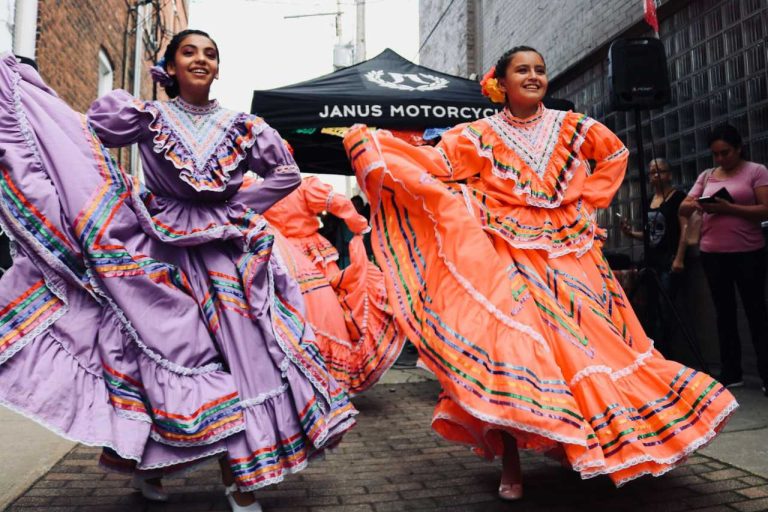
A Speedy Guide to Ser and Estar Conjugation
DATE:
As it usually turns out – some of the most common Spanish verbs end up being highly irregular. And this is absolutely true with Ser and Estar. Both of these two verbs end up causing students a lot of problems when they’re learning Spanish because of their tricky conjugation tables.
But today – we’re going to be putting the Ser vs Estar problems to rest. We’ll see that while the two verbs might be a bit complicated at first, they’re nothing you can’t handle!
The good news is that these two verbs are so common that you’ll have them memorized in no time!
So let’s get straight to it and figure out how to conjugate the verbs Ser and Estar.
Ser Conjugation
The first verb we want to talk about is Ser. Although you can use either Ser or Estar to mean “to be”, we use Ser to talk about more permanent traits.
We’ll use it to express a characteristic or describe how something always is. But before getting too deep into the meaning, let’s look at all the different ways you can conjugate Ser.
Present Tense
We’ll start with the easiest of all the conjugations in Spanish grammar – the present indicative tense.
This tense is used when talking in the present or when referring to things that happen generally. Ser is an irregular verb for the present indicative, so pay close attention to this verb:
|
Subject Pronoun |
Ser |
|---|---|
|
Yo |
Soy |
|
Tú / Vos |
Eres / Sos |
|
Él / Ella / Usted |
Es |
|
Nosotros |
Somos |
|
Vosotros |
Sois |
|
Ellos / Ellas / Ustedes |
Son |
As you can see – it’s completely irregular, especially when compared to other verbs in the present tense.
Like we said before, you can use the verb Ser to describe nouns, and professions, or talk about their characteristics. For example:
- María es alta. – María is tall.
- Ellos son médicos. – They are doctors.
- Somos simpáticos. – We are nice.
Imperfect Tense
The imperfect tense is the easiest way to talk about the past in Spanish. Just like we did in the present tense, we’ll use the verb Ser to describe nouns – but this time, in the past.
Let’s look at this example chart:
|
Subject Pronoun |
Ser |
|---|---|
|
Yo |
Era |
|
Tú / Vos |
Eras |
|
Él / Ella / Usted |
Era |
|
Nosotros |
Éramos |
|
Vosotros |
Érais |
|
Ellos / Ellas / Ustedes |
Eran |
Just like in the present tense – the verb is completely irregular! That means there’s, unfortunately, no easy way to memorize it other than practice, practice, practice.
So to that aim, let’s look at an example of how to use Ser in the imperfect tense.
- Cuando yo era joven, jugaba al fútbol. – When I was young, I played soccer/football.
- La chica era de la República Dominicana. – The girl was from the Dominican Republic.
- Era una situación muy extraña. – It was a very strange situation.
We have a comprehensive guide that covers all you need to know about the Ser imperfect conjugations and their use. Go and check it out!
Preterite Tense
We’re going to stay in the past tense for a little bit and talk about one of the most DIFFICULT tenses in Spanish grammar – the preterite tense.
When you’re learning Spanish, you’ll soon realize that there are many more ways to express the past than in English, so it ends up taking students some time to get used to it.
But the worst news – the conjugations for the preterite tense are intense (pun intended).
So let’s look at how we can use Ser in the preterite tense and start to master this tricky verb.
|
Subject Pronoun |
Ser |
|---|---|
|
Yo |
Fui |
|
Tú / Vos |
Fuiste |
|
Él / Ella / Usted |
Fue |
|
Nosotros |
Fuimos |
|
Vosotros |
Fuisteis |
|
Ellos / Ellas / Ustedes |
Fueron |
As you can see – there’s not really too much rhyme or reason to the verb in this tense. In fact – the conjugation chart for the verb Ser is the exact same as for the verb Ir.
So that can be either a blessing or a curse – depending on how you view it!
But let’s look at a few examples of how to use Ser in the preterite tense:
- Fuimos ocho en el restaurante. – There were eight of us in the restaurant.
- Yo fui la primera persona en llegar. – I was the first person to arrive.
- Fueron unos maleducados. – They were really rude.
Check out our full guide on the Ir preterite conjugation if you want to see more similarities between these two verbs.
Future Tense

Moving on to the future tense – we finally have a bit of good news. Ser actually is not an irregular verb in the future tense! That means for once, you can finally just follow along with the traditional Spanish grammar rules to describe events in the future.
|
Subject Pronoun |
Ser |
|---|---|
|
Yo |
Seré |
|
Tú / Vos |
Serás |
|
Él / Ella / Usted |
Será |
|
Nosotros |
Seremos |
|
Vosotros |
Seréis |
|
Ellos / Ellas / Ustedes |
Serán |
As you’ll see, there’s not actually anything difficult about ser or estar in the future tense! But just for completeness, let’s look at some examples:
- Algún día, serás jefe. – One day, you’ll be the boss.
- Serán las cuatro. – It must be four o’clock.
Confused about that use of the future tense here? Go see our complete guide on the Spanish future tense!
Subjunctive Present Tense
Moving on to some more difficult conjugations again, both Ser and Estar are irregular in the subjunctive form – so you’ll need to get back to doing some simple memorization to perfect these.
Let’s look at an example of the subjunctive conjugation chart:
|
Subject Pronoun |
Ser |
|---|---|
|
Yo |
Sea |
|
Tú / Vos |
Seas |
|
Él / Ella / Usted |
Sea |
|
Nosotros |
Seamos |
|
Vosotros |
Seais |
|
Ellos / Ellas / Ustedes |
Sean |
Like always, there truly are no verbs like Ser and Estar. So you’ll have to break out your flashcards and start practicing all of the different forms of this tricky verb.
- No creo que sea así. – I don’t think it’s like that.
- Que bien que ya sean las cinco. – It’s so nice it’s finally five o’clock.
- Cuando seas mayor, te lo contaré. – When you’re older, I’ll tell you.
Imperfect Subjunctive Tense
Moving on to the last of the tricky conjugations for these Spanish verbs – the imperfect subjunctive tense. This is definitely the most difficult of all the conjugations for Ser and Estar – and it will absolutely require the most amount of work.
But practice makes perfect, so little by little you’ll become a pro at how to use Ser.
|
Subject Pronoun |
Ser |
|---|---|
|
Yo |
Fuera / Fuese |
|
Tú / Vos |
Fueras / Fueses |
|
Él / Ella / Usted |
Fuera / Fuese |
|
Nosotros |
Fuéramos / Fuésemos |
|
Vosotros |
Fuerais / Fueseis |
|
Ellos / Ellas / Ustedes |
Fueran / Fuesen |
You can use either of these two forms interchangeably – there’s no difference at all! So whichever one you want to go with, feel free to use it!
Here’s an example of how to use the imperfect subjunctive:
- Yo no pensaba que fuera el alcalde. – I didn’t think he was the mayor.
- Ojalá que fuéramos ricos. – I wish we were rich.
Participle and Gerund
Finally, the last bit of information you need to completely master the verb Ser. The participle and gerund are crucial verb forms in Spanish that will allow you to use all the remaining tenses and grammar concepts.
- Ser participle – sido
- Ser gerund – siendo
So with both Ser and Estar, you can combine the participle or the gerund with other verbs to form more complex grammar structures. This is very common in the past or present perfect tenses.
For a full rundown of an example of this way to use Ser, make sure to read our guide on the Spanish past perfect tense.
Estar Conjugation

Now that you’ve completely mastered one way to say “to be” – it’s time to move on to the next part of the Ser vs Estar debate.
Estar is a common Spanish verb that is used to talk about temporary conditions or states. It’s frequently used to describe emotions, location, and anything that can change.
So let’s get into more detail with Ser and Estar by checking out how to use Estar.
Present Tense
You’re probably already familiar with the present indicative tense for Estar, but it never hurts to practice it just a little bit more! It’s a highly irregular verb form, so you’ll need to make sure you have your eye on this one if you want to speak like a natural.
|
Subject Pronoun |
Estar |
|---|---|
|
Yo |
Estoy |
|
Tú / Vos |
Estás |
|
Él / Ella / Usted |
Está |
|
Nosotros |
Estamos |
|
Vosotros |
Estáis |
|
Ellos / Ellas / Ustedes |
Están |
As you can see – the yo form is completely irregular and the endings for the second and third person always have accent marks. Let’s look at an example of how to use Estar in a sentence:
- Mis amigos están al otro lado de la ciudad. – My friends are on the other side of the city.
- ¿Estamos listos para continuar? – Are we ready to continue?
- El chico está muy alto. – The boy is really high up.
Notice the difference between Ser vs Estar with the adjective Alto? Estar just describes the condition, but Ser is a physical trait.
Imperfect Tense
Finally – some more good news! While Ser and Estar don’t have many tenses that are regular, Estar is actually a regular verb in the imperfect! Check out the example chart:
|
Subject Pronoun |
Estar |
|---|---|
|
Yo |
Estaba |
|
Tú / Vos |
Estabas |
|
Él / Ella / Usted |
Estaba |
|
Nosotros |
Estábamos |
|
Vosotros |
Estabais |
|
Ellos / Ellas / Ustedes |
Estaban |
As you can see – you shouldn’t have any problems at all using Estar in the imperfect tense! It’s completely regular – for once. But just in case, let’s look at a few examples of how to use Estar in a sentence.
- No estaba donde lo guardé. – It wasn’t where I put it.
- ¿Ustedes estaban buscando la parada del metro, verdad? – You all were looking for the metro station, right?
Preterite Tense
Moving back to some more difficult topics again – Estar is a prime example of how complicated the preterite tense usually is. In fact, whether you’re using Ser or Estar or almost any verb – the preterite tense tends to cause trouble.
|
Subject Pronoun |
Estar |
|---|---|
|
Yo |
Estuve |
|
Tú / Vos |
Estuviste |
|
Él / Ella / Usted |
Estuvo |
|
Nosotros |
Estuvimos |
|
Vosotros |
Estuvisteis |
|
Ellos / Ellas / Ustedes |
Estuvieron |
Here, the stem of Estar changes to Estuv-. The only other verb that makes the same change is Andar. So, at least these tricky Spanish verbs can help you with a couple of other conjugation charts while you’re at it!
- Estuvimos en el hospital todo el día ayer. – We were in the hospital all day yesterday.
- ¿Cuándo estuviste en Colorado? – When were you in Colorado?
This ultimate guide of the Estar preterite conjugations covers everything you need to know to master it. Make sure to check it out!
Future Tense
The future tense gives us a rare opportunity in our battle of Ser vs Estar. Neither of the two verbs is irregular! This just might be the only time you’ll ever see this! Look at this conjugation chart example:
|
Subject Pronoun |
Estar |
|---|---|
|
Yo |
Estará |
|
Tú / Vos |
Estarás |
|
Él / Ella / Usted |
Estará |
|
Nosotros |
Estaremos |
|
Vosotros |
Estaráis |
|
Ellos / Ellas / Ustedes |
Estarán |
As you can see, all you have to do for Ser or Estar is follow the typical conjugation chart for future tense verbs. So, whenever you want to describe something in the future – at least you won’t have any problems doing it!
- ¿El día 18 de marzo, estarás disponible? – Will you be available on the 18th of March?
- Estaremos cerca de la fuente. – We’ll be near the fountain.
DID YOU KNOW…?
Days of the week and months are not capitalized in Spanish like they are in English? Spanish actually has very different capitalization rules!
Subjunctive Present Tense
Now that we’ve moved past one of the only easy tenses in the Ser vs Estar battle – we’re going back to talking about irregular forms.
The subjunctive present tense is another classic example of Estar being an irregular verb. Although luckily, it’s not absurdly irregular. It’s just similar enough to other verbs that you might get caught off guard, so don’t forget the accent marks!
|
Subject Pronoun |
Estar |
|---|---|
|
Yo |
Esté |
|
Tú / Vos |
Estés |
|
Él / Ella / Usted |
Esté |
|
Nosotros |
Estemos |
|
Vosotros |
Estéis |
|
Ellos / Ellas / Ustedes |
Estén |
As you can see, unlike other subjunctive verbs – you’ll need to include accent marks for every form except the first person plural.
Let’s look at an example or two on how to use the present subjunctive with Estar.
- No creo que esté muy lejos ya. – I don’t think it’s too far now.
- Espero que estés mejor. – I hope you feel better.
- Lo importante es que estén sanos. – What’s important is that they’re healthy
Imperfect Subjunctive Tense
This is the final and most difficult way to use Estar. In fact, both Ser and Estar are equally tricky in the imperfect subjunctive. Let’s look at some ways we can express the imperfect subjunctive using Estar:
|
Subject Pronoun |
Estar |
|---|---|
|
Yo |
Estuviera / Estuviese |
|
Tú / Vos |
Estuvieras / Estuvieses |
|
Él / Ella / Usted |
Estuviera / Estuviese |
|
Nosotros |
Estuviéramos / Estuviésemos |
|
Vosotros |
Estuvierais / Estuvieseis |
|
Ellos / Ellas / Ustedes |
Estuvieran / Estuviesen |
Just like we mentioned with Ser, feel free to use either verb form you like with these. In most cases – it’s just up to personal preference. Now let’s look at some examples of how to use Estar in this form:
- Ojalá estuvieras más tiempo. – I wish you were here longer.
- No creía que estuviera listo. – I didn’t think he was ready.
Participle and Gerund
Let’s move on to the final piece of the puzzle. The participle and gerund forms of the verb are critical to being able to use Estar in the many other conjugation forms.
- Estar Participle – Estado
- Estar Gerund – Estando
And there you have it! If you want to use the progressive tense or any of the perfect tenses, now you have all the different parts you need to combine with Estar.

¡Ya estamos!
That’s all for today! We’ve gone through just about every possible conjugation for Ser vs Estar, so you should be proud of yourself!
It’s definitely not easy memorizing all of these many conjugations in the Spanish language, but it is crucial to do so. The verbs Ser and Estar happen to be highly irregular parts of Spanish, so it’s understandable if you don’t master it on day one. You’ll just need to keep practicing; eventually, you’ll know them like the back of your hand.
If you’re ready to show off your skills with verbs like Ser and Estar, go ahead and sign up for a free private class or a 7-day free trial of our group classes and practice what you learned!











